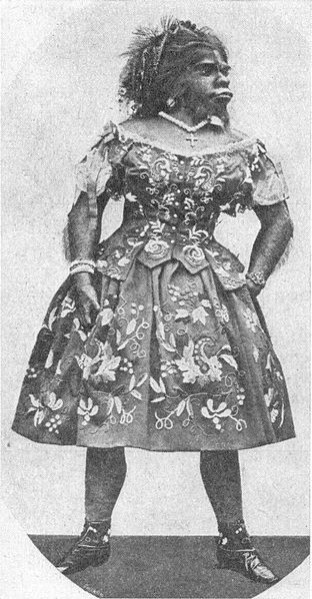‘Ape Woman’ Buried After 150 Years: Hypertrichosis Victim Julia Pastrana Given Mexican Burial

Julia Pastrana, an indigenous Mexican woman who toured the United States and Europe during the Victorian-era as the “ape woman,” had a rare, undiagnosed congenital condition that gave her an ape- or bear-like appearance. Now, her remains have finally been transported to her native country and given a proper burial 153 years after her death.
Pastrana, who died at the age of 26, suffered from a genetic disease called hypertrichosis, or “werewolf syndrome,” that left her face covered in dark black hair. Pastrana also had an abnormally large nose and ears and a double set of teeth that protruded from her mouth, and led Charles Darwin to describe her as having a “gorilla-like appearance.”
In the 1850s, Pastrana was discovered and bought by the American showman, Theodore Lent, who later married her and became her manager, the New York Times reported.
“She was definitely in love with Mr. Lent,” Jan Bondeson, a Swedish rheumatologist who included a chapter on Pastrana in his book, “A Cabinet of Medical Curiosities,” told the New York Times. “I am certain the reason he married her was that he could keep control of her and the not unconsiderable earnings.”
Although newspapers of that period were often cruel in their physical appraisals of Pastrana, she was noted for her talent in singing and dancing, and was even described by Darwin as “a remarkably fine woman,” despite her physical appearance.
Just days after giving birth to a son, Pastrana died in Moscow in 1860, of a fever stemming from complications from childbirth. Lent embalmed her body, along with that of their newborn son, who had inherited Pastrana’s condition, and continued to display them in shows throughout Europe. Her remains were later purchased by a Norwegian collector.
“By ending up as part of a collection in a basement, she lost any trace of dignity,” Laura Anderson Barbata, a visual artist, told the newspaper. “My ultimate dream goal was that she should go back to Mexico and be buried.”
Barbata added, "The story is so important. Bringing her back here is a way of recovering it."
After years of campaigning for Pastrana’s return, Mario Lopez Valdez, the current governor of Sinaloa, Pastrana’s native state, joined the petition. In a letter to Norway’s human-remains ethics board, Valdez pleaded for Pastrana’s body to be returned to Mexico, out of “respect for human dignity and a high sense of justice.”
"Imagine the aggression and cruelty of humankind she had to face, and how she overcame it. It's a very dignified story," Valdez said.
Pastrana's body was interred on Tuesday in a cemetery in Sinaloa de Leyva, a town near where she grew up.
© Copyright IBTimes 2025. All rights reserved.





















